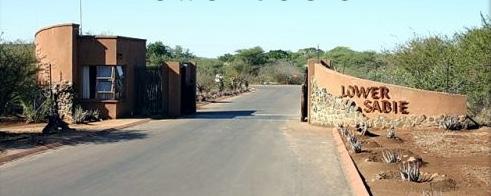
3 minute read
Ground Water: Making the Invisible Visible #KnowYourParks – Lower Sabie Rest Camp in KNP
Ground Water: Making the Invisible Visible
By Khensile Moriri
Advertisement
Inkomati-Usuthu Catchment Management Agency (IUCMA) partnered with various stakeholders within the water management area (WMA) and hosted the final Science School competition during the National Water week 2022 on Monday, 7 March 2022 at Thulani Primary School in Mkhuhlu. National Water week is celebrated annually in March as an awareness campaign by the Department of Water and Sanitation to emphasise the value of water, the need for sustainable management of this rare resource and the role water plays in communities.
“It is both exciting and overwhelming to form part of the stakeholders of the event as KNP. I personally cannot wait to see the models built by learners. Ground water is one of my specialties and I know for a fact how important water is and the critical role it plays to meet the demands in human uses. Take this challenge as a learning curve to unpack more around environmental
Top 3 school learners show their prizes
issues, have fun and feel free to ask questions for clarity, as we are all here to learn from each other,” proclaimed Tercia Strydom, a scientist at the Kruger National Park.
Five schools under the Ehlazeni district in Bushbuckridge, grouped in a team of five, showed off their talents and skills of creative work through the water models they have built out of recyclable and non-recyclable materials. Learners had to demonstrate their designs and illustrate how water will be extracted from the ground and supplied to communities, bearing in mind the theme “making the invisible visible”.
Learners were evaluated based on the team’s ability to present a cohesive report of the model they had made; participation of each member within the team; verbal presentation; model appearance; efficiency and effectiveness of the water model. The event ended on a cheerful note where the top three learners took home trophies and E-learning tablets.
#KnowYourParks – Lower Sabie Rest Camp in KNP
By Phokela Lebea
Lower Sabie Entrance – Gate –

Lower Sabie graces the banks of the Sabie River, one of the few perennial rivers to flow through the Kruger National Park. Visitors cannot help but feel soothed by the view towards the river and the Lebombo Mountains beyond.
In this rest camp, the bounty and plenitude of nature is very evident, eloquently symbolised by the most conspicuous of its numerous trees, the mighty sycamore fig, which provides generously for the livelihood of many birds and insects. Not only do these giants produce fruit at least twice a year, but different trees produce fruit at different times, extending the gift of life over many months. Watching the endless procession of animals coming to drink at the Sabie River establishes a sense of one’s own place in the eternal cycle. Five things to look out for in Lower Sabie – leopard, hippo, lion, goliath heron and a giant kingfisher.
Activities in the camp include guided bush walks, game drives, bush breakfast and bush braai, sunset dam and Nthandanyati bird hide (approximately 11km from camp).

Accommodation at Lower Sabie Rest Camp caters to a variety of guest requirements. Choose anything from luxury, self-catering, caravanning or camping accommodation for your stay in the wilderness. Lower Sabie has a designated day visitor area. There are also picnic sites nearby at Nkuhlu (± 20km), Mlondozi Dam (17km) and Tshokwane (43km).










